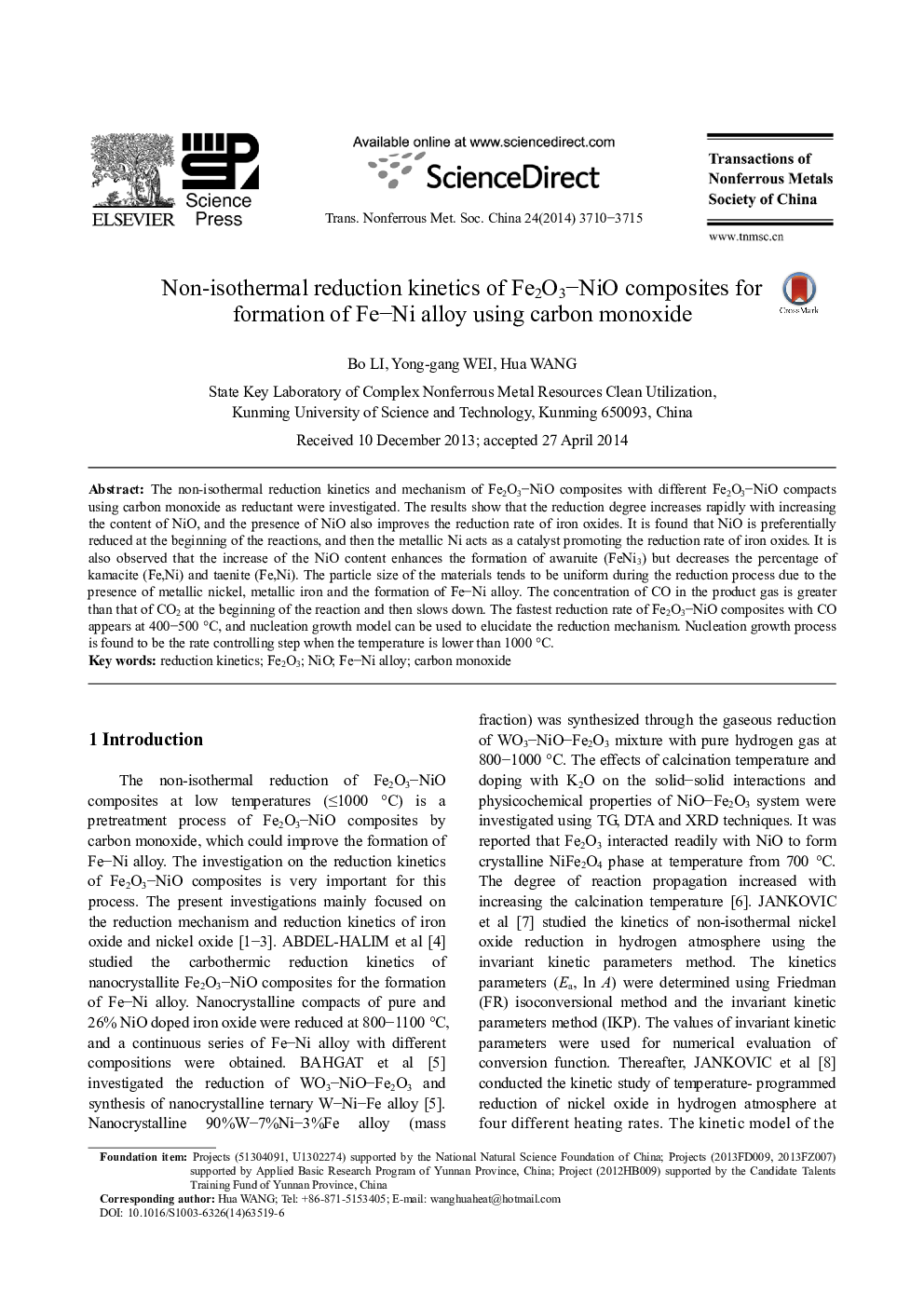| Article ID | Journal | Published Year | Pages | File Type |
|---|---|---|---|---|
| 1636199 | Transactions of Nonferrous Metals Society of China | 2014 | 6 Pages |
Abstract
The non-isothermal reduction kinetics and mechanism of Fe2O3-NiO composites with different Fe2O3-NiO compacts using carbon monoxide as reductant were investigated. The results show that the reduction degree increases rapidly with increasing the content of NiO, and the presence of NiO also improves the reduction rate of iron oxides. It is found that NiO is preferentially reduced at the beginning of the reactions, and then the metallic Ni acts as a catalyst promoting the reduction rate of iron oxides. It is also observed that the increase of the NiO content enhances the formation of awaruite (FeNi3) but decreases the percentage of kamacite (Fe,Ni) and taenite (Fe,Ni). The particle size of the materials tends to be uniform during the reduction process due to the presence of metallic nickel, metallic iron and the formation of Fe-Ni alloy. The concentration of CO in the product gas is greater than that of CO2 at the beginning of the reaction and then slows down. The fastest reduction rate of Fe2O3-NiO composites with CO appears at 400-500 °C, and nucleation growth model can be used to elucidate the reduction mechanism. Nucleation growth process is found to be the rate controlling step when the temperature is lower than 1000 °C.
Related Topics
Physical Sciences and Engineering
Materials Science
Metals and Alloys
Authors
Bo LI, Yong-gang WEI, Hua WANG,
